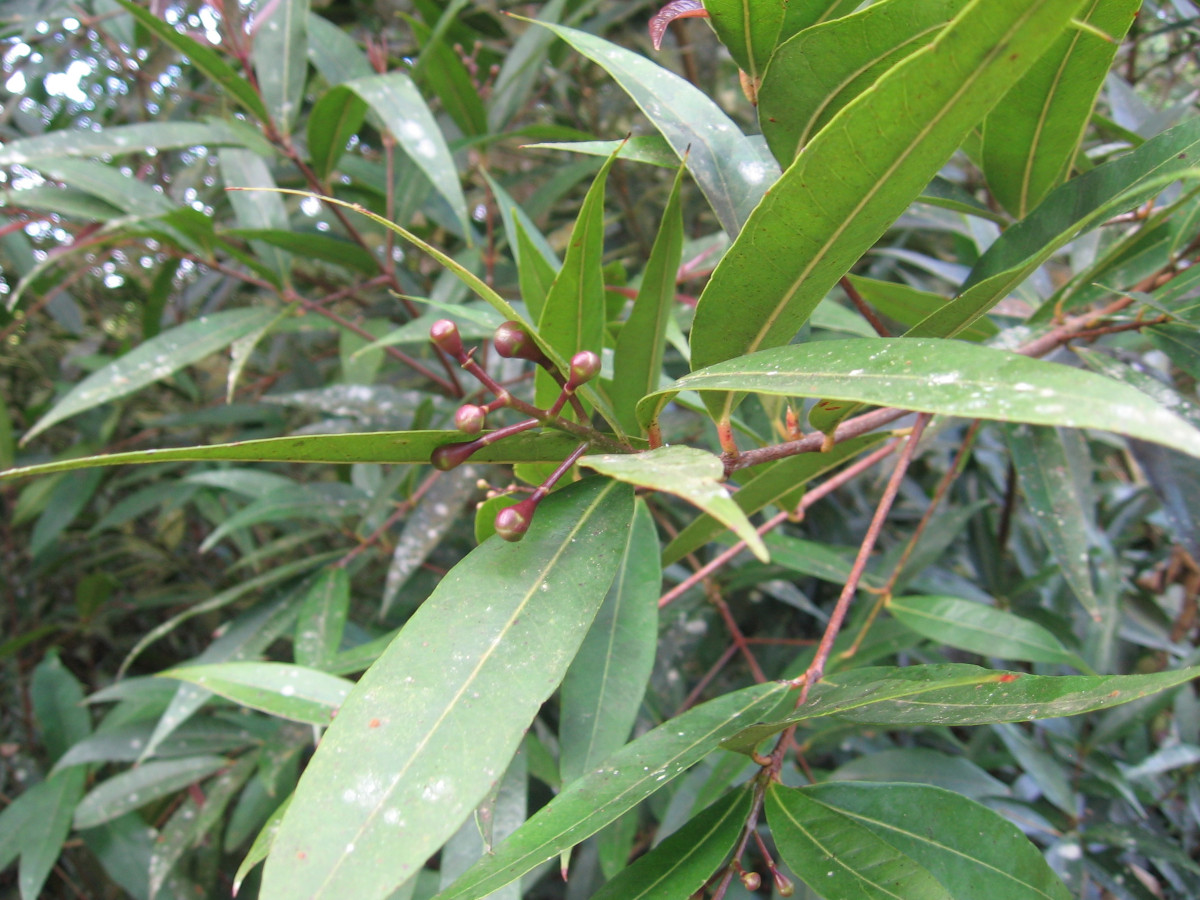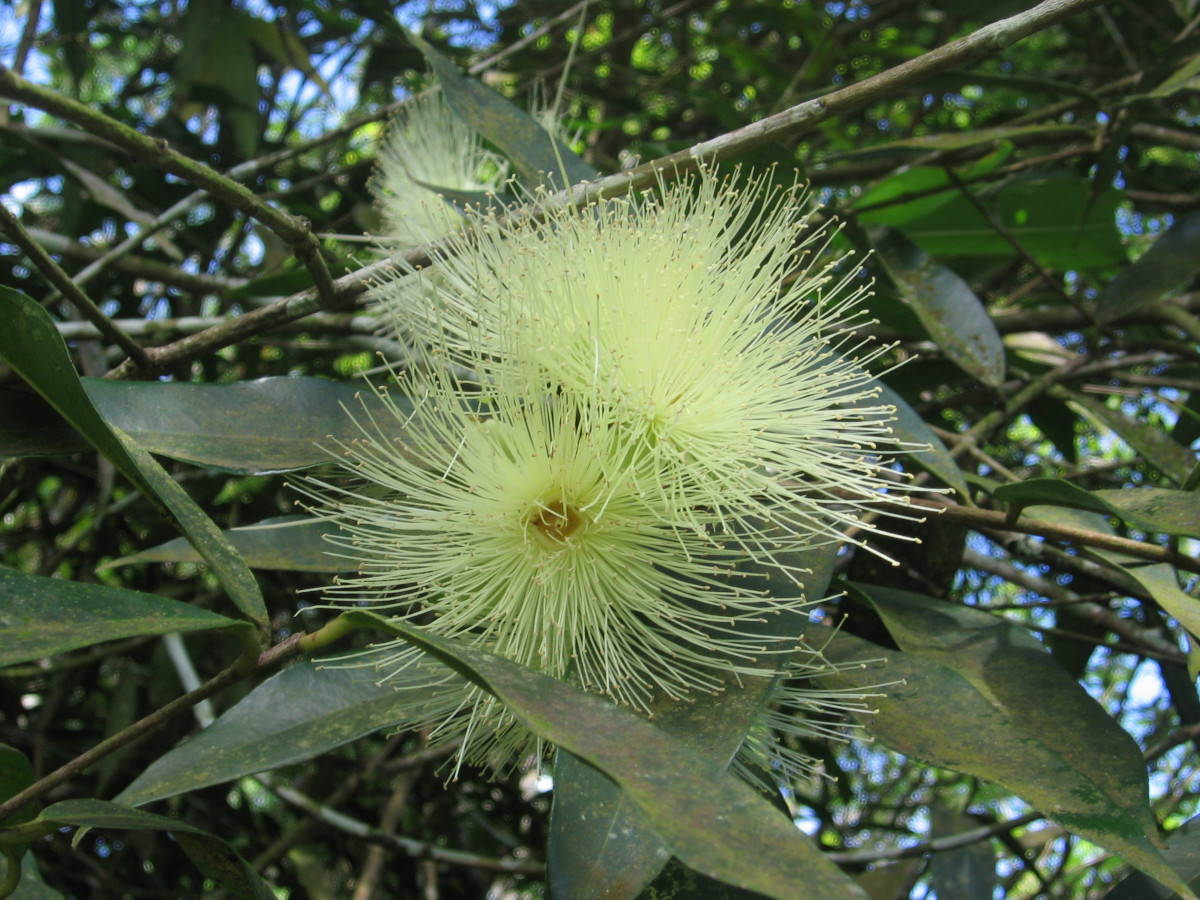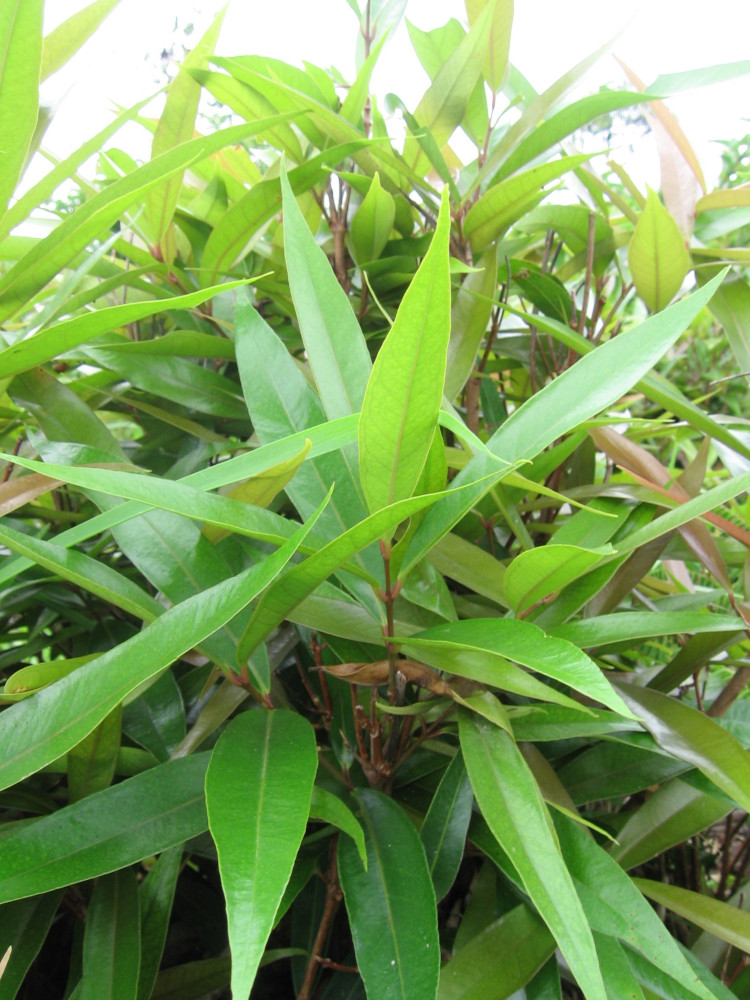Galapagos Species Database
The Galapagos Species Database shares the information about the species from our Natural History Collections.
Syzygium jambos
pomarosa, pumagas, manzana rosa, malabar plum, plum rose, rose apple






The Malabar plum is a large tree that can reach a height of up to 20 meters. The flowers are large, white or cream-colored, and look like pompoms. The fruit is subglobulose and is 2-4cm long, with a whitish to pinkish-yellow color. Malabar plum trees sprout vigorously when cut.
A large tree reaching a height of about 20m. The flowers are large, white or cream-colored, and look like pompoms. The fruit is subglobulose and 2-4 cm long, with a whitish to pinkish yellow color. The plants may bloom and produce fruit within 3 to 4 years old. Rose apple trees sprout vigorously when cut.
Domain
Eukaryota
Kingdom
Plantae
Phylum
Magnoliophyta
Class
Magnoliopsida (= Dicotyledoneae)
Order
Myrtales
Family
Myrtaceae
Genus
Syzygium
Species
jambos
Taxon category: Accepted
Syn.: Eugenia jambos L. fide Royal Botanic Gardens, Kew & Missouri Botanical Garden (2010)
Taxon origin: Introduced - established
Preference for an altitude zone in Galapagos: Humid zone
Habitat preferences: Malabar plum trees thrive in moisture-rich zones and survive in variety of different soil types. Malabar plum trees invade undisturbed forests.
Trophic role: Primary producer
Reproductive biology: The malabar plum may bloom and produce fruit within 3 to 4 years old.
Growth form: Trees
Distribution origin: Southeast Asia
Distribution classification: Paleo-tropical
Mode of introduction: Intentional
Introduction Pathway: Intentional
Subpathway: Agriculture/Horticulture
Introduced status: Naturalized
Invasive status: Invasive
Impact in Galapagos: It has invaded large areas of agricultural area and the National Park in San Cristobal, where its dense canopy shades the understory and inhibits the growth of other plants.
Impact elsewhere: The tree is able to invade all types of forests including natural forest, it has the potential to invade riparian vegetation and colonize the edges of wet rainforests of the tropics and subtropics. This species has formed nearly monospecific patches of high density and height in places without human disturbance. Its dense canopy heavily shades the understory, inhibiting the growth of other plants.
Control History in Galapagos: On Floreana, there are very few plants and there was a program to eradicate the species from the island. The project is missing monitoring.
Control methods elsewhere: The seedlings should be pulled manually. For trees, use herbicide applied to cuts made in the trunks (girdling).
Known Pest elsewhere: Widespread
Year of first record: 1965
Map of specimen collection localities or observation records for this species in our collections database.
Distribution: Santa Cruz, San Cristobal, Floreana, Isabela, originally from Southeast Asia. The distribution is wide on San Cristobal but on Santa Cruz, Floreana, and Isabela it is primarily found in the agricultural zone and near towns.
- Wiggins, I.L. Porter, D.M. (1971) Flora of the Galapagos Islands Standford University Press, Stanford.
- Adsersen, H. (s.a.) Field notes, 1974 and 1977 collections Charles darwin Research Station, unpublished Manuscript.
- Lawesson, J.E. (s.a.) Pers. obs. field notes, collections 1985-7.
- Chavez, J. (1993) Diagnostico de la Agricultura y la Ganader¡a en la Provincia de Galapagos. Tesis.
- Lundh, J.P. (1995) Some additional information and comments on the Annotated Check list of Vascular Plants of the Galapagos Islands by Lawesson, Adsersen and Bentley. Charles Darwin Research Station, unpublished.
- Prado Erazo, G.E. (1986) Informe preliminar, Censo de especies arboreas introducidas en la zona agricola de la isla Santa Cruz. Charles Darwin Research Station, unpublished, typescript CDF library
- Jaramillo, P. (1998) Distribución Espacial de la Vegetación Vascular y Dispersión de Especies Introducidas dentro del Parque Nacional Galápagos. Tesis de Doctorado en Biología, Universidad Central del Ecuador. Especialización ECOLOGIA DE POBLACIONES.
- McMullen, C.K. (1999) Flowering plants of the Galapagos. Cornell University Press, Ithaca and London, 370 pp.
- Tropicos.org. (2017) Database of Missouri Botanical Garden. Tropicos.org. Missouri Botanical Garden. 06 Oct 2017 <http://www.tropicos.org
- Royal Botanic Gardens, Kew Missouri Botanical Garden (eds.) (2013) The Plant List, Version 1.1. Published on the Internet; http://www.theplantlist.org/ (accessed 1st January).
- Stewart, A. (1911) A botanical survey of the Galápagos Islands. Proc. Calif. Acad. Sci. 4th Series, 1: 7-288.
- Tapia, W. Jaramillo, P. (1999) Las especies introducidas agresivas en las islas Galápagos y medidas tomadas para su control. El Parquero. 40 años del Parque Nacional Galápagos, 14-16.
- Guézou, A. Trueman, M., Buddenhagen, E., Chamorro, S., Guerrero, A.M., Pozo, P., Atkinson, R. (2010) An extensive Alien Plan Inventory from the Inhabited Areas of Galapagos Plos One/ www.plosone.org. Volume 5/ Issue 4/e10276
- Restrepo, A. Bush, M., Correa-Metrio, A., Conroy, J., Gardener, M. R., Jaramillo, P., Steinitz-Kannan, M., Overpeck, J. & Colinvaux, P. (2011) Impacts of climate variability and human colonization on the vegetation of the Galápagos Islands. Ecology: 1-42.
- Gardener, M. Atkinson, R., Rueda, D. & Hobbs, R. (2010) Optimizando la restauración de la degradada parte alta de Galápagos: un marco conceptual. Informe Galápagos 2009-2010.
- Gardener, M. R. A. Tye and S.R. Wilkinson (1999) Control of Introduced plants in the Galapagos Islands. Twelfth Australian Weeds Conference, Tasmania Weed Society. Pp 396-400.


Dispersal propagule: Fruit
The seeds are dispersed via ingestion and excretion by animals and by intentional planting by humans.